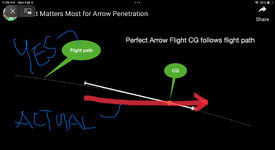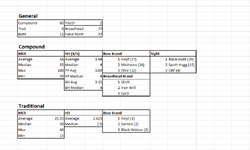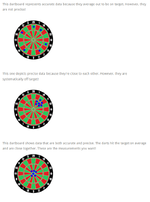Beendare
WKR
We are finally starting to see some good info on arrow penetration on Youtube...instead of the crazies. Good performance is almost all about having perfect arrow flight.
This one is accurate all except the minor issue of the attitude of the arrow in flight real world. Arrows with avg FOC fly parallel to the ground while following the parabolic flight path he illustrates....unless they have massive tip weight, then they can fly with a nose down attitude
Hat tip to Lunghit on another site for recommending this vid.....the guy pretty much nails it.
This one is accurate all except the minor issue of the attitude of the arrow in flight real world. Arrows with avg FOC fly parallel to the ground while following the parabolic flight path he illustrates....unless they have massive tip weight, then they can fly with a nose down attitude
Hat tip to Lunghit on another site for recommending this vid.....the guy pretty much nails it.
Last edited:




